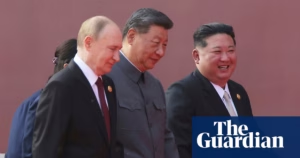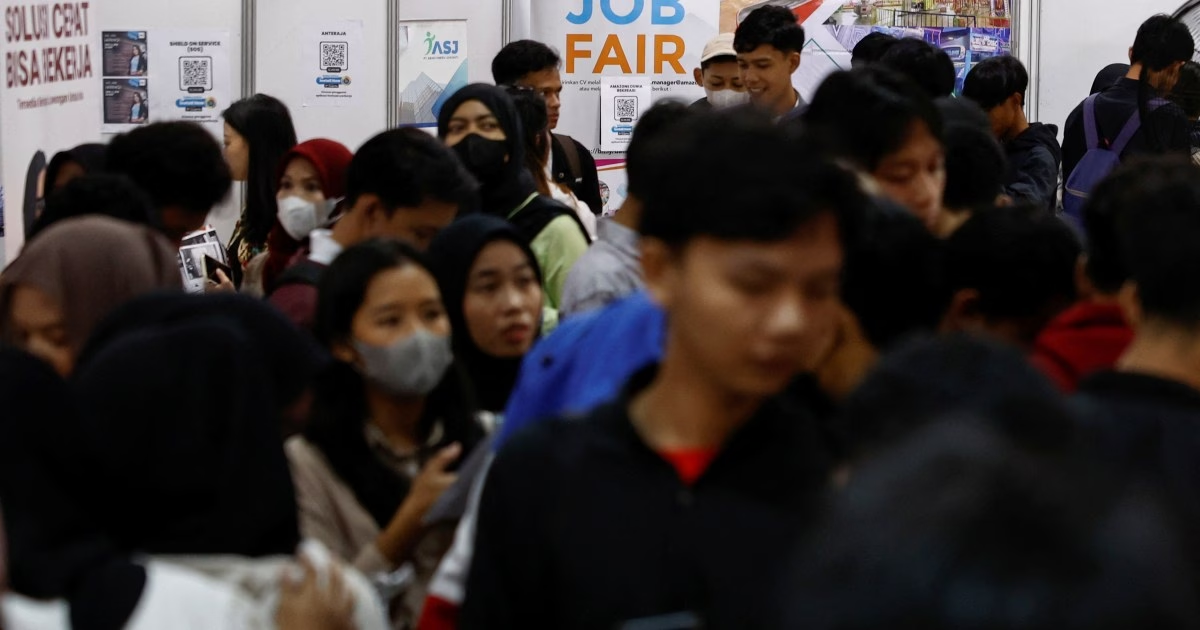In reality, Hutapea found himself facing one rejection after another.
Hutapea first failed to make it through Indonesia’s notoriously difficult civil service exams, which lead to a job for only about 3 percent of applicants, and was similarly unsuccessful in his bid to become a trainee prosecutor.
Before law school, Hutapea had dreamed of joining the army, but he could not meet the height requirement.
Eventually, with his money running out, Hutapea left the student accommodation he was renting to move back in with his parents, who run a simple shop selling oil, eggs, rice and other groceries.
Hutapea has been working at his parents’ shop, in a town on the outskirts of Medan, the capital of North Sumatra, ever since.
“I open the shop for them in the morning, sit there throughout the day serving customers and then help close at night,” Hutapea, who graduated from high school in 2020, told Al Jazeera.
“My parents don’t pay me a wage for my work, but I can’t blame them for that. They are giving me free food and lodging.”
Hutapea is far from alone in his struggles to find stable, well-paying work.
Indonesia has one of the highest rates of youth unemployment in Asia.
About 16 percent of the more than 44 million Indonesians aged 15-24 are out of work, according to government statistics – more than double the youth unemployment rate of neighbouring Thailand and Vietnam.
In a survey published by the ISEAS-Yusof Ishak Institute in Singapore in January, young Indonesians expressed far more pessimistic attitudes about the economy and the government than their peers in Thailand, Malaysia, Singapore, the Philippines, and Vietnam.
Only about 58 percent of Indonesian youth said they were optimistic about the government’s economic plans, according to the survey, compared with an average of 75 percent across the six countries.

In February, some of this angst emerged on the streets when university students formed the Indonesia Gelam, or Dark Indonesia, movement to protest government plans to cut spending on public services.
Economists highlight several factors for the high rate of jobless youth in Southeast Asia’s largest economy, from inflexible labor laws that make hiring challenging to low wages that do not attract qualified workers.
“Many individuals choose to stay out of the labor market rather than work for a salary below their expectations,” Adinova Fauri, an economist at the Centre for Strategic and International Studies (CSIS), Indonesia, in Jakarta, told Al Jazeera.
“Quality jobs are also scarce, so people turn to the informal sector, which has lower productivity and protection,”
Indonesia, with over 280 million people, has long battled chronic youth unemployment.
Despite being higher compared to the rest of the region, the government has over the years managed to help more young people find employment – as recently as a decade ago, a quarter of young Indonesians were estimated to be jobless.
Indonesian President Prabowo Subianto, a retired army general who oversaw crackdowns on the 1998 student protests that led to the fall of former President Soeharto, has acknowledged the need to create more jobs, establishing task forces to address unemployment and negotiate trade deals with U.S. President Donald Trump.
On Wednesday, Prabowo praised the start of “a new era of mutual benefit” for Indonesia and the U.S., after Trump announced an agreement to reduce tariffs on Indonesian goods from 32 to 19 percent.
 Though older adults are less at risk of unemployment – Indonesia’s overall jobless rate is around 5 percent – much of the available work is unstable and poorly paid.
Though older adults are less at risk of unemployment – Indonesia’s overall jobless rate is around 5 percent – much of the available work is unstable and poorly paid.About 56 percent of the Indonesian workforce is employed in the informal sector, according to 2024 figures from the Bureau of Statistics, leaving millions in vulnerable conditions without social security protections.
“The decline in the open unemployment rate does not necessarily mean the labor market is performing well,” Deniey Adi Purwanto, a lecturer at the Department of Economics at IPB University in Bogor, told Al Jazeera.
“The quality of jobs and informal employment remain major issues,”
But for young people, the mismatch between job seekers and job availability is particularly severe.
“Firstly, graduates of secondary and tertiary education do not always match the labor market’s needs, and there is also a high level of informality,” Purwanto said.
“Indonesia has a very large number of young people, so the pressure on the labor market is much higher.
“We also have rapidly increasing levels of secondary and higher education,” he added.
“Many young college graduates avoid informal or low-paid jobs, so they choose to wait for suitable jobs, which leads to unemployment,”
Purwanto said there was also a lack of effective vocational training and apprenticeship programs in Indonesia, compared with neighbors such as Vietnam or Malaysia.
“In Malaysia, for example, there are more industry-university linkage schemes and graduate employability programs,”
 Significant regional disparities in Indonesia, which consists of about 17,000 islands, exacerbate the problem, with young people in remote and rural areas struggling the most to access good jobs.
Significant regional disparities in Indonesia, which consists of about 17,000 islands, exacerbate the problem, with young people in remote and rural areas struggling the most to access good jobs.This is particularly true in areas outside the island of Java, which is home to the capital Jakarta and more than half of Indonesia’s population.
Hutapea experienced this firsthand when he moved back with his parents, who live about two hours out of Medan.
Despite having a law degree, Hutapea, who is desperate to leave working in his parents’ shop, finds job opportunities scarce.
Hutapea, who also has a part-time job setting up sound systems for weddings and parties, recently attended an interview for a job replenishing banknotes in ATMs.
But despite what he thought was a successful interview, he did not hear back from the recruiter.
For Hutapea, who completed some of his law school modules over the summer holidays to graduate a year early, it is tough not to feel like his efforts have been in vain.
“I didn’t want to be a burden to my parents, who were paying all my university fees,” Hutapea said.
“But look at me now.”







